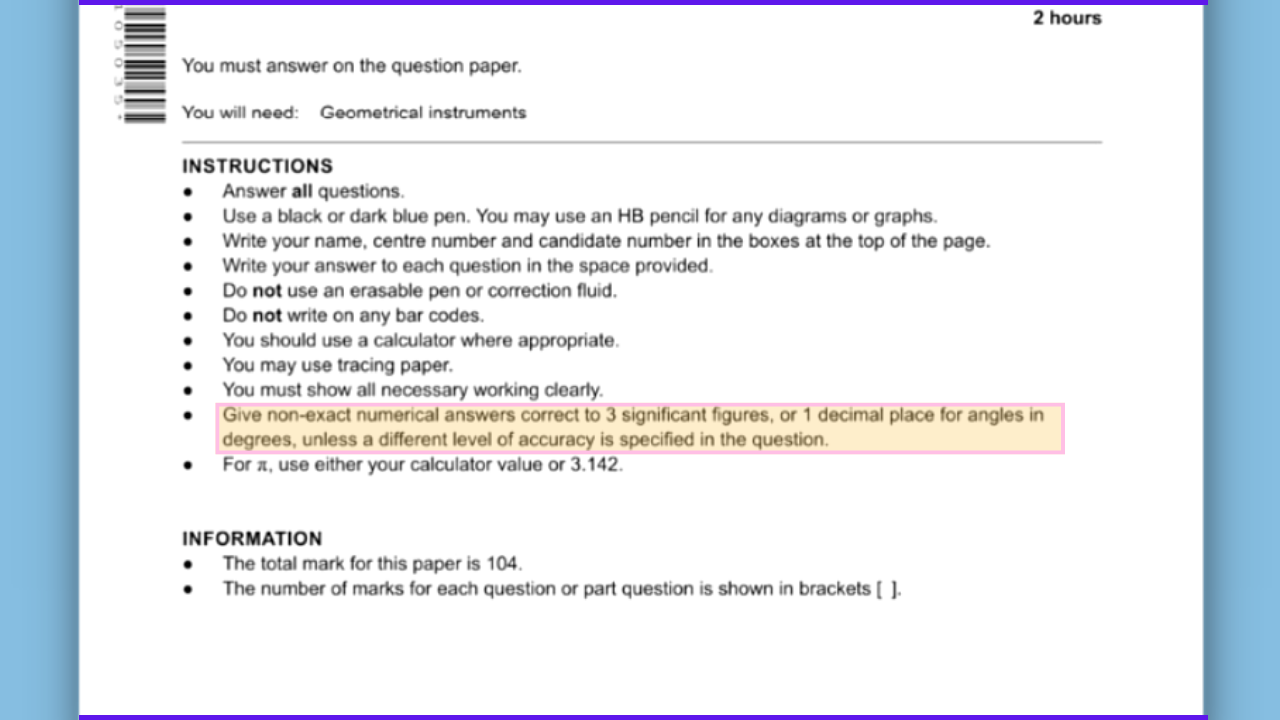Most students get a bit confused when rounding off their final answers, they are not exactly sure how to go about it.
This process is actually very simple and straight to the point.
I have detailed everything you need to know about rounding off your answers below:
For terminating decimals:
Write out the decimal in full (especially with Lower Bound and Upper Bound questions and calculating “mean” values).
For non-terminating decimals:
Round off to what has been specified in the question.
Round off to 1 decimal place for angles.
Round off to 2 decimal places for money (values in dollars, euros, etc.)
Round off to 3 significant figures for all other values.
Note: Avoid rounding off values in the middle of your working. Let me explain with a random (very random) example:
Let’s say a question requires you to find the length of BC in triangle ABC. But in order to find BC, you need to first find another length, let’s say PQ.
When you find the value of PQ, keep it in its exact form and use that to find BC. Or, if it’s a terminating decimal, keep it to about 2 to 4 decimal places (I find that the sweet spot tends to be 3 decimal places) and use it to find BC.
Otherwise, this may lead to inaccurate final values at the end of your working. As a result, you may lose at least 1 mark for that question.



No Comments on How to round off your answers when solving IGCSE Maths papers